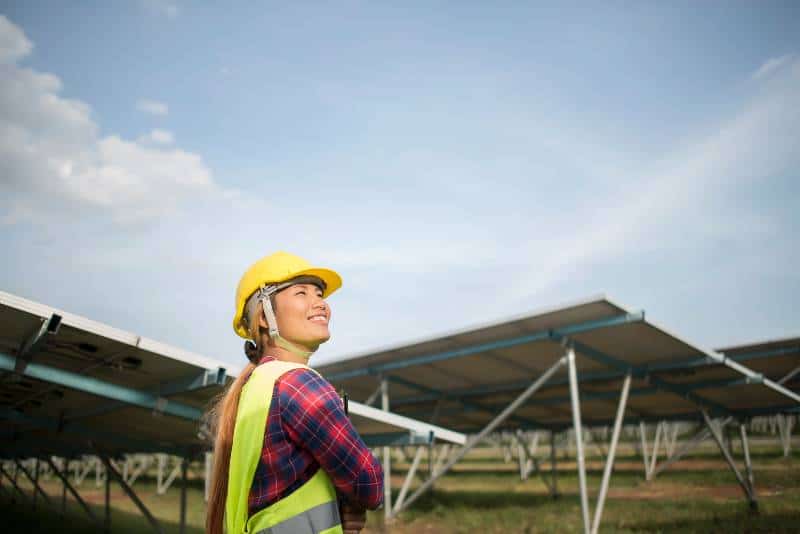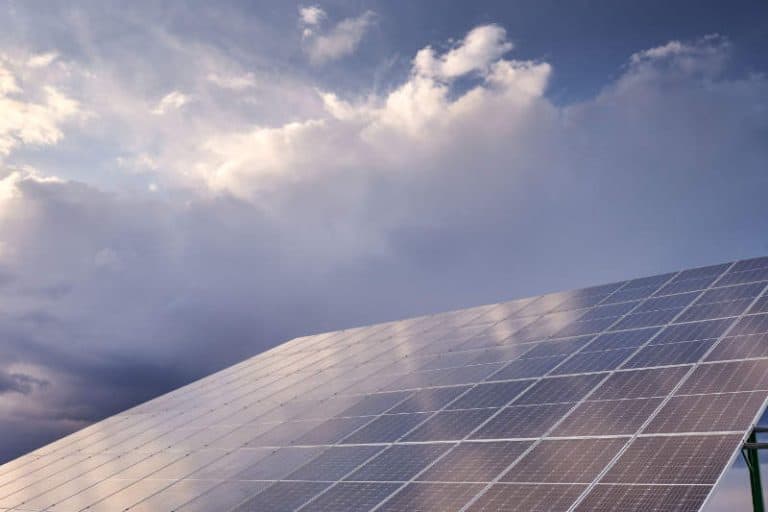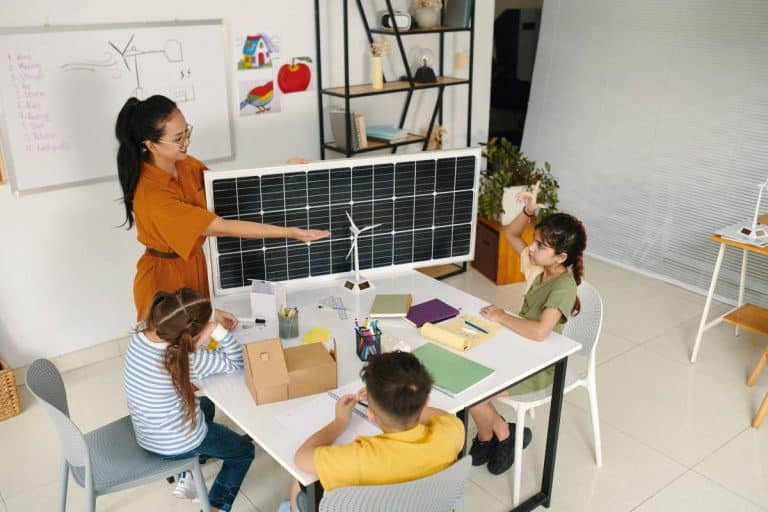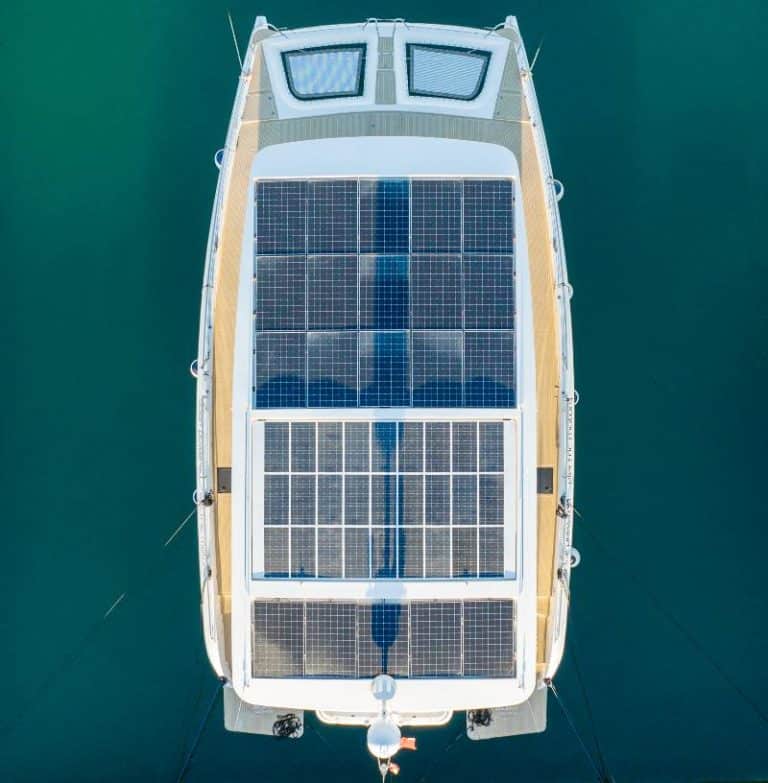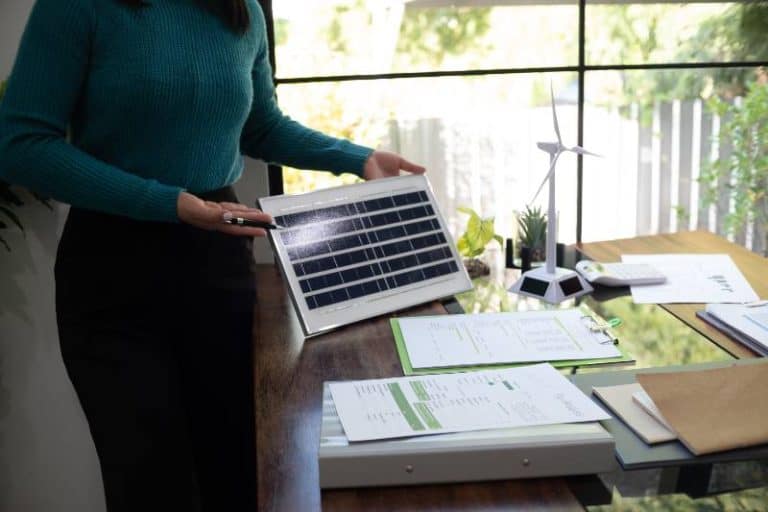Can I Plug a Solar Panel Into an Outlet? Your Guide & Tips
Solar panels are a great way to reduce your carbon footprint and save money on your energy bills, but you may be wondering if you can plug them into an outlet. In this blog post, we will answer the question, ‘Can I Plug A Solar Panel Into An Outlet?’ and provide tips on how to use solar panels in your home!
It’s dangerous to use a plug-in solar panel, This can pose a serious safety hazard, as electrical equipment is designed to operate within certain voltage limits.
Key Takeaways
- You can plug a solar panel into an outlet, but it’s not recommended. The problem is that the power used by the outlet will be higher than the power output of any solar panel.
- There are better alternatives to using a plug-in solar panel.
- Solar panels are designed to be connected to the grid, not to an outlet directly.

Is it possible to use a solar panel with an outlet?
Solar panels are a popular renewable energy source, but many people are unaware of their limitations. While it is possible to connect an outlet to a solar panel, the power produced by the panel will be highly variable and unpredictable. This can pose a serious safety hazard, as electrical equipment is designed to operate within certain voltage limits.
Furthermore, fluctuations in power can damage sensitive electronics, such as computers and TVs. For these reasons, it is generally not recommended to connect an outlet directly to a solar panel. However, there are some inverters that can be used to stabilize the power output of a solar panel, making it safe for use with sensitive electronics.
How To Connect A Solar Panel To An Outlet?
A solar charge controller is the first additional component required. This device regulates the output of the solar panel in order to provide a continuous supply for charging batteries while also supporting a load rated at the same output voltage as the panels.
You can power equipment rated at the same DV voltage as the panels with the solar charge controller alone, but you will most likely want to run devices that require higher voltage AC power. A second gadget would be required for this.
An inverter is the second item that would make the setup more useful.
The inverter will receive a 12-volt input from the solar panel directly and convert it to 120 or 240-volt AC electricity via the charge controller.
Some inverters can switch between 120 and 240 volts AC, while others have a fixed AC output voltage. Make sure your inverter is rated for the gadget you’ll be connected to.
After connecting the inverter, an outlet can be attached to it. You may then put an AC-powered gadget into the outlet and have it fueled by the solar panel.
You could have a dedicated plug designed only for the solar panels that the grid tie inverter plugs into.
Plug-in solar panels: why are they so appealing?
Plug-in solar panels are a great way to add power to your home. They’re environmentally friendly, convenient, and can be used almost anywhere. But the one thing that often holds people back from using them? Reliability.
Many people are unaware of the fact that solar panels have several limitations, one being that it’s only possible to connect an outlet to a solar panel. The power produced by the panel is also highly variable and unpredictable which in turn poses a serious safety hazard because electrical equipment is designed to operate within certain voltage limits.
Who currently makes plug-in solar panels?
In recent years, solar energy has become increasingly popular as a way to save money on energy costs. However, the initial investment required to install a solar panel system can be prohibitive for many homeowners. As a result, companies like PluggedSolar and SunPlug have begun offering plug-in solar kits as an affordable alternative. These Plug In Solar Kit typically cost between $500 and $1200, and can be easily installed by do-it-yourselfers. While the panels themselves are relatively small, they are still capable of producing enough electricity to significantly reduce energy costs. In addition, the kits come with all of the necessary hardware and instructions, making them a great option for budget-minded homeowners who are interested in exploring solar power.
But remember, plug-in solars are not advisable.
How does plug-in solar work?
Plug-in solar photovoltaic (PV) technology is a method of powering your home or business using solar panels that are connected to the mains electricity supply. The PV system generates electricity from sunlight, which is then fed into the mains circuit. The household appliances and devices that use the mains power supply will then draw their electricity from the PV system, meaning that they will run on free solar power.
Is it safe to use plug-in solar panels?
Although plug-in solar panels have become increasingly popular in recent years, they may actually be illegal in some areas. This is because they feed electricity into a home circuit without dedicated shutoff and safety features. This can violate many local utility codes and pose a serious safety hazard. In addition, plug-in solar panels are not typically installed by a licensed electrician. As a result, they may not meet all of the necessary safety standards.
No Dedicated Wiring
Perhaps the most significant disadvantage of plug-in solar panels is that they require no dedicated wiring. This means that they can be installed by anyone, without the need for a professional electrician. However, it also means that they are not subject to the same safety standards as professionally installed systems.
Safe Panel Mounting
Another safety concern with plug-in solar panels is that they are often not mounted properly. In order to be effective, solar panels must be installed in a way that allows them to receive direct sunlight for the majority of the day.
The cons of plug-in solar panels
If you’re thinking about getting a plug-in solar panel, you want to know if you can plug it into an outlet. You might be able to, but there are some things you should consider before making that decision.
Let’s start with the cons of using a plug-in solar panel:
Safety concerns
Although plug-in solar panels have become increasingly popular in recent years, they may actually be illegal in some areas. This is because they feed electricity into a home circuit without dedicated shutoff and safety features. This can violate many local utility codes and pose a serious safety hazard.
Costs
Another downside of plug-in solar panels is that they can be quite expensive. The initial cost of the panels themselves is often high, and then there are also the costs associated with installation and maintenance.
Shock or electrocution from energized conductors
If the solar panel is not properly installed, there is a risk of shock or electrocution from energized conductors. This can be extremely dangerous and is one of the main reasons why plug-in solar panels are often illegal in some areas.
Alternatives to plug-in solar systems
If you want to go solar, but don’t have the room or money for a full system, you may be wondering if there’s another option.
Here are some alternatives to plug-in solar systems:
Solar panels that can be placed on top of the roof of your home
If you’re thinking about going solar, but worried about the cost of solar installation, an alternative to plug-in solar systems is a roof-top system. These systems are installed on top of your home’s roof and provide electricity for your home. They can be used to power appliances and lights, or even to power an entire house.
Device chargers (powerbanks)
Device chargers are the perfect alternative to plug-in solar systems. They have the same benefits, but they’re smaller and more portable.
You can take your device charger with you on road trips, camping trips, or just about anywhere else you want to go. And unlike a traditional solar system, which needs to be mounted on your roof or somewhere else permanent in order for it to work properly, device chargers are small enough that you can tuck them away in a corner of your home when they’re not in use—without disturbing the look of your space at all!
Off grid
Off-grid means that you don’t have any connection to the electricity grid, which means that you produce all of your own electricity using solar panels and batteries. This can be done in a variety of ways, but most people who choose this option use solar panels and batteries to charge their devices directly or store power in batteries for later use.
Portable Solar Panels
These are lightweight and portable, so they’re great for camping or boating! They can also be used while charging your cell phone at home—just set up the panel near a wall outlet and plug in your phone! Portable solar panels a great solar backup system and are easy to install and maintain, but they tend to cost more than other types of portable power sources.
Solar Panel Systems
A solar panel system is a great option if you want to go all-in on solar power. These systems are composed of multiple panels that are connected together in order to generate more power; the more panels you have, the more electricity will be generated by your solar panels.
These systems are powerful and can provide enough energy to run your home for an entire day or even longer depending on how much sunlight hits them during the day.
Solar panels for water heating
This is a great way to save money on heating water during the winter months. Water heating accounts for about half of an average household’s energy use, so it’s one of the best places to start when looking at ways to reduce your carbon footprint. Solar panels can be installed on roofs or above ground, depending on the situation at hand. The cost will vary depending on your location and how much sunlight reaches the area where you live—and whether or not you have access to an electrician who can install them properly!
Hybrid system
A hybrid solar system uses both solar panels and backup batteries to store energy. The sun’s energy is absorbed by the solar panels and converted into usable electricity. This electricity can then be used to power your home, charge your battery, or be sent back to the grid.
A solar hybrid system is beneficial because you will always have power. The backup battery stores the excess energy that your solar panels create, but your home does not use it.
When the sun is not shining, this battery will power your home when the sun isn’t out. During storms or blackouts, it’ll also supply electricity during the night if necessary. Hybrids are a fantastic option for individuals who do not want to be totally reliant on solar energy.
What does the future hold for plug-in solar panels?
In a word: nothing.
Or, at least, not much of anything good—and that’s a shame.
Solar panels are a great way to save money on your electric bill and help the environment at the same time, but plug-in solar panels have never been able to reach their full potential.
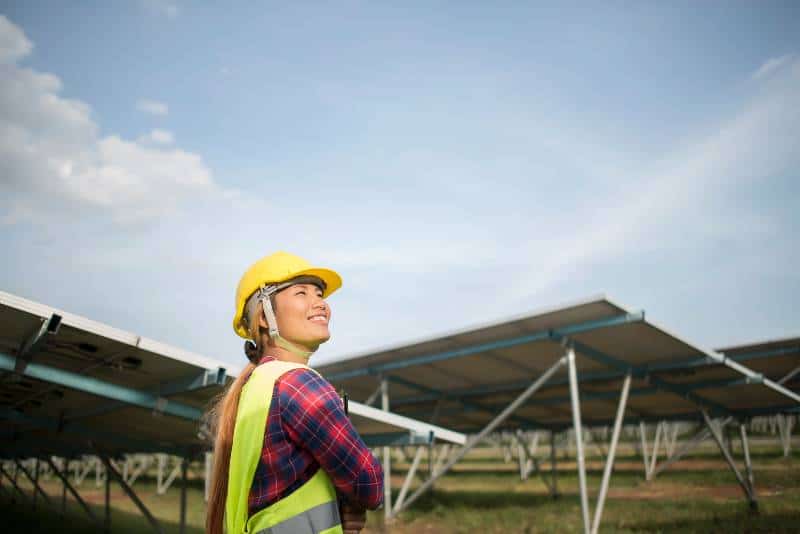
Plug-in Solar Panel FAQs
Do solar panels have to be connected to the grid?
Solar panels have to be connected to the grid because the solar inverter changes solar power into grid power. A piece of solar kit sits in between them: the solar inverter. Solar inverters change solar electricity into grid electricity. The grid provides a consistent, reliable source of power that can be used when the sun isn’t shining.
Solar panels generate electricity when the sun shines on them, but they don’t store it very efficiently. So, connecting them to the grid means that you can use the solar panels to generate electricity during the day, and then draw from the grid at night or on cloudy days. It’s a system that takes advantage of both solar and grid power.
In addition, many utilities offer net metering programs, which give you credit for any excess solar electricity that you generate and send back to the grid. So, even if you’re not using all of the solar electricity that your panels generate during the day, you can still benefit financially. In short, there are many benefits to connecting your solar panels to the grid.
How do you charge solar panels without the sun?
One of the great advantages of solar energy is that it can be used to power homes and other buildings even when the sun isn’t shining. But how exactly do you charge solar panels without the sun? One method is to place the panels directly underneath a household light, such as an incandescent light bulb.
The light from the bulb will help to charge the solar panel as quickly as possible. Another method is to place your solar lights as close to the light bulb as possible. The further away it is from an incandescent light bulb, the longer it will take your solar panel to charge.
However, both of these methods will require you to use more electricity from your home’s power source. As a result, they may not be the most cost-effective way to charge your solar panels.
What can I run off a portable solar panel?
A portable solar panel can be a great way to reduce your carbon footprint and save money on your energy bill. Solar panels are able to convert sunlight into electricity, which can then be used to power any number of appliances in your home.
While the initial cost of a solar panel may be higher than traditional forms of energy, the long-term savings can be significant.
In addition, solar energy is a renewable resource, meaning that it will never run out. Portable solar panels are also relatively easy to install, making them a great option for those who want to reduce their reliance on fossil fuels.
Solar energy is a renewable resource, meaning that it will never run out: generate free electricity! Portable solar panels are also relatively easy to install, making them a great option for those who want to reduce their reliance on fossil fuels. Solar installation is a process in which solar panels are installed on a home or building. This can be done by a professional solar installer, or the owner can do it themselves.
Solar installation typically takes one to two days. The first step is to find a location for the solar panels. The second step is to secure the solar panels to the roof or ground. The third step is to connect the solar panels to the electrical system.
Solar installation can be done on any type of roof, and it does not require special equipment. All that is needed is a ladder and some basic hand tools. Solar installation is a great way to reduce your reliance on fossil fuels, and it will never run out.
Conclusion
Although it is possible to plug a solar panel into an outlet, it’s not the best option. You can still use solar power to your advantage by using a solar charger. Solar chargers are becoming more and more popular, so you should have no trouble finding one that will work for you. If you want to learn more about using solar power to charge your devices, visit our other articles!
